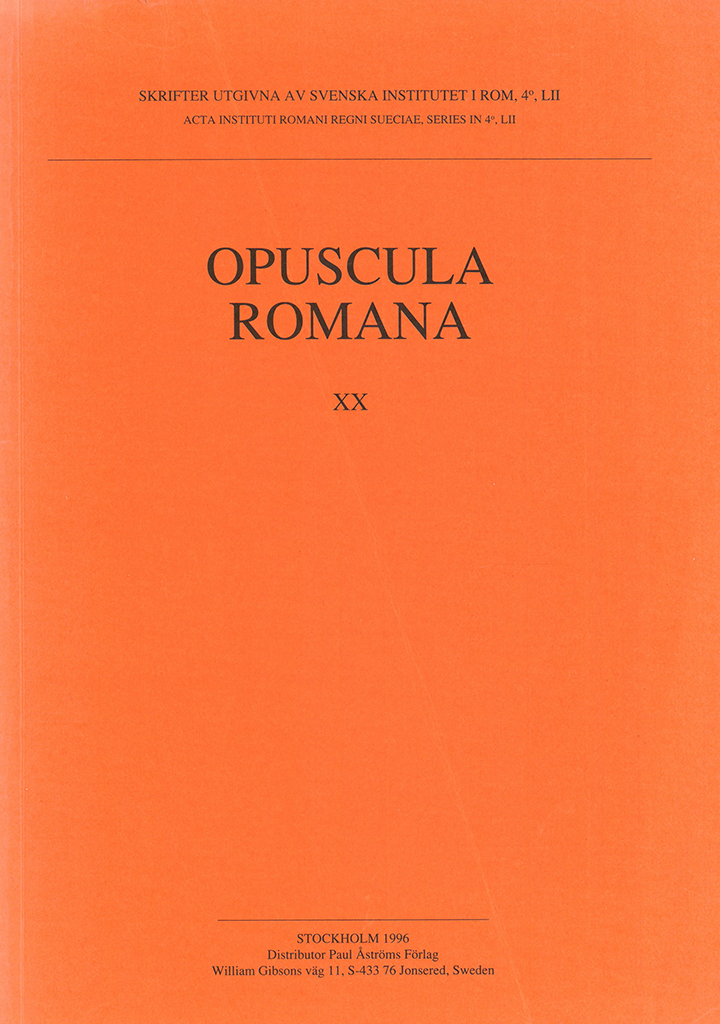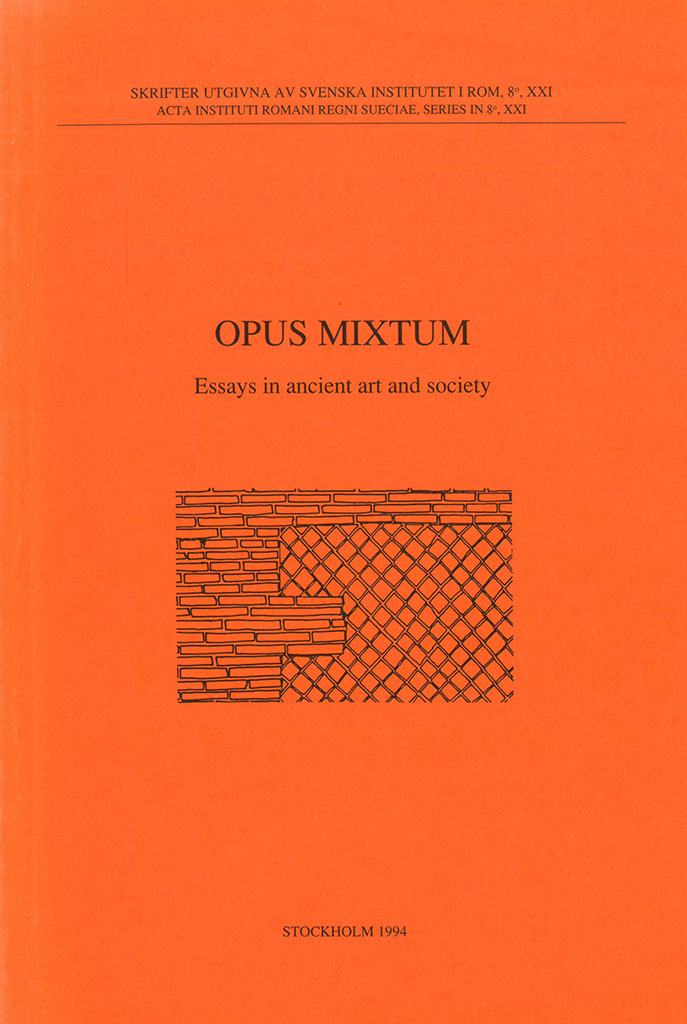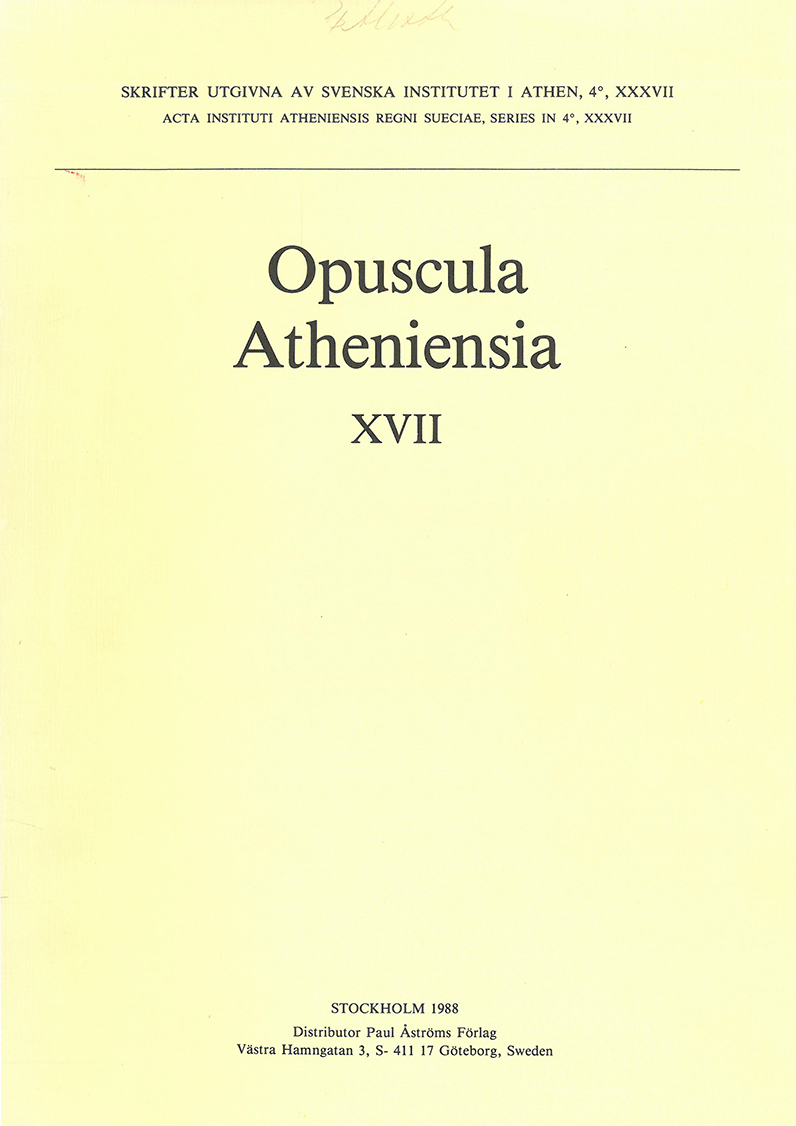Published by the Swedish Research Institute in Istanbul (SRII) and distributed by Eddy.se AB at srii.bokorder.se. Also available for purchase at Amazon.com, Bokus.com, and Adlibris.com. The Labraunda-series is edited by the Editorial Committee of the Swedish Institutes at Athens and Rome. Labraunda 5. The Andrones By Pontus Hellström and Jesper Blid This is the final publication of the two Hekatomnid Andrones at Labraunda. The older of these (the Andron of Maussollos or Andron B) was built by the satrap Maussollos (377/6–353/2 BC). This is shown by the dedicatory inscription on the architrave. The other andron (Andron A) is clearly later and was probably built by Idrieus (351/0 344/3 BC), the brother and successor of Maussollos as satrap of Karia. This building has the same kind of dedication, but the name of the commissioner is not preserved. These two buildings are unique both for their size, temple-like front, and high degree of preservation and for their Ionic-Doric mixed order, the function as banqueting halls, and the large niche at the back of the inner room. In the publication the architecture of the two buildings is systematically presented together with plans and elevations of the ruins and reconstructions. The walls are of…
Distributed by Astrom Editions. This volume of the Opuscula Atheniensia is dedicated to Pontus Hellström. Contents Katie Demakopoulou, Nicoletta Divari-Valakou, Ann-Louise Schallin, Erika Weiberg, Lena Sjögren & Monica Nilsson | Excavations in Midea 2003 (pp. 9-27) Izabella Donkow | A Hellenistic wreathed male head from Cyprus in the Museum of Mediterranean and Near Eastern Antiquities in Stockholm (pp. 29-38) Niklas Hillbom | The Knossos game board (pp. 39-71) Isabelle Ratinaud-Lachkar | Insoumise Asiné? Pour une mise en perspective des sources littéraires et archéologiques relatives à la destruction d’Asiné par Argos en 715 avant notre ère (pp. 73-88) Book reviews Søren Dietz | M. Lindblom, Marks and makers. Appearance, distribution and function of Middle and Late Helladic manufacturers’ marks on Aeginetan pottery (pp. 89-90) Carl Nylander | J. Boardman, Persia and the West: an archaeological investigation of the genesis of Achaemenid art (pp. 90-92) Paavo Roos | P. Debord & E. Varinlioglu (eds.), Les hautes terres de Carie (pp. 92-94) Renée Forsell | S.E. Alcock, J.F. Cherry & J. Elsner (eds.), Pausanias. Travel and memory in Roman Greece (pp. 94-95) Jan Olof Rosenqvist | C. Mango (ed.), The Oxford History of Byzantium (pp. 95-97) Books received (p. 98) The published writings…
Published by the Swedish Institute of Classical Studies in Rome. Distributed by Astrom Editions. Opuscula Romana 20. Pär Göran Gierow dedicata Contents Kristina Berggren, Tre tombe a cremazione con trace di legno nella necropolis di Quattro Fontanili a Veio (Roma) Ingrid E.M. Edlund-Berry, The power of cults and sacred spaces. The interpretation romana of sanctuaries in southern Italy and Sicily Maria C. Eriksson, Two Etruscan mirrors in the Thorwaldsen Museum, Copenhagen Björn Forsén & Timo Sironen, Bolli laterizi romani nell’Antikmuseet in Göteborg Lena Landgren, The Roman pleasure garden—foundations for future studies Peter Liljenstolpe, De ornamentis templi Urbis. Reconstructing the main order of the temple of Venus and Roma in Rome Alessandro Naso, Osservazioni sull’origine dei tumuli monumentali nell’Italia centrale David Ridgway, Greek letters at Osteria dell’Osa Paavo Roos, Strabo and the water-mill at Cabeira. Some considerations Raffaele Santillo, Il «saxum ingentem» a Ravenna a copertura del Mausoleo di Teoderico: problemi e soluzioni Martin Söderlind, A central Italic, terracotta votive head in the Classical Museum of Antiquities in Lund (in association with Pierluigi Bianchetti, technical analysis) Margareta Strandberg Olofsson, Pottery from the monumental area at Acquarossa: a preliminary report Bengt E. Thomasson, Laterculi praesidium. Addendorum series altera Örjan Wikander, Senators and…
Distributed by Astrom Editions. Opus Mixtum. Essays in ancient art and society Edited by Eva Rystedt, Charlotte Scheffer, and Charlotte Wikander Fifteen papers on various aspects of ancient art and society are gathered in this volume. They deal with the choice of moment depicted in the Parthenon frieze, the use of the Greek architectural orders in political propaganda, and the “programme” of the relief plaques from zone F at Acquarossa which is suggested to be celebrations connected to the ruler. The architectural layout of a well-temple in Sardinia is interpreted as an iconographic message of the cult of Tanit-Astarte. The significance of the horse in connection with death and the various types of female deities connected with horses in Archaic Greek religion are discussed, as well as the image of Artemis Ephesia and its connection with the mysteries of the goddess, the epithet Ambologera (“Delayer of old age”) attributed to Aphrodite, and the role of women in Roman religion. A white-ground lekythos by the Achilles Painter with the “mistress-and-maid” motif associated with music-making is analysed. A reconstruction of the Laocoon group, especially regarding the positions of the serpents is put forward. A marble head of Dionysos in the Swedish Zorn…
Published by the Swedish Institute at Athens. Distributed by Astrom Editions. Opuscula Atheniensia 17 Contents Paul Åström, Katie Demakopoulou & Gisela Walberg, ‘Excavations in Midea 1985’, pp. 7–11. Valerie Cook, ‘Cyprus and the outside world during the transition from the Bronze Age to the Iron Age’, pp. 13–32. Kåre Fagerström, ‘Fnds, function and plan: a contribution to the interpretation of Iron Age Nichoria in Messenia’, pp. 33–50. Arne Furumark (†), ‘Linear A and Minoan religion’, pp. 51–90. Heinz-Eberhard Giesecke, ‘Kretische Schurze’, pp. 91–98. Robin Hägg, ‘The last ceremony in the Throne Room at Knossos’, pp. 99–105. Pontus Hellström, ‘The planned function of the Mnesiklean Propylaia’, pp. 107–121. Bente Kiilerich, ‘Bluebeard—a snake-tailed Geryon?’, pp. 123–136. Nanno Marinatos, ‘The “African” of Thera reconsidered’, pp. 137–141. Susana Sjödin, ‘Bronze Age pottery sherds from Cyprus. Further supplementary material from Kalopsidha trench 9’, pp. 143–165. Christiane Sourvinou-Inwood, ‘”Myth” and history: on Herodotus III.48 and 50–53’, pp. 167–182. Colette Verlinden, ‘Réflexions sur la function et la production des figurines anthropomorphes Minoennes en bronze’, pp. 183–189. Anna Wærn-Sperber, ‘Mössbauer spectroscopy and quantitative chemical analyses of Early Cypriote black-topped pottery. A preliminary investigation’, pp. 191–197. Gisela Walberg, ‘Was Evans right? Further notes on Middle Minoan chronology’, pp. 199–201….
Luni sul Mignone. Results of excavations conducted by the Swedish Institute of Classical Studies at Rome and the Soprintendenza alle Antichià dell’Etruria Meriodionale Published by the Swedish Institute of Classical Studies in Rome. Volumes published 2007 and earlier distributed by Astrom Editions. Volumes published 2008 and later distributed by Eddy.se AB. Vol. 1 not yet published Vol. 2. Excavations and finds. Iron Age, Etruscan, Roman and Medieval periods Fasc. 1. Torgun Wieselgren 1969. The Iron Age settlement on the Acropolis, Lund (softcover: 111 pp.). Luni sul Mignone, the small hill which will be remembered for its important remains from the Bronze Age and for the Monumental Iron Age building, has also brought to light less important remains from the latter period, which will be dealt with in the present report. It was during the third Luni campaign, led by Dr Carl Erik Östenberg on behalf of the Swedish Institute in Rome, that I was asked to undertake an excavation on the NE side of the Luni plateau. In the hope of finding remains of habitation we started where there still seemed to be enough earth to produce a stratification, since higher up where the earth-layer was only 20-15 cm deep,…






